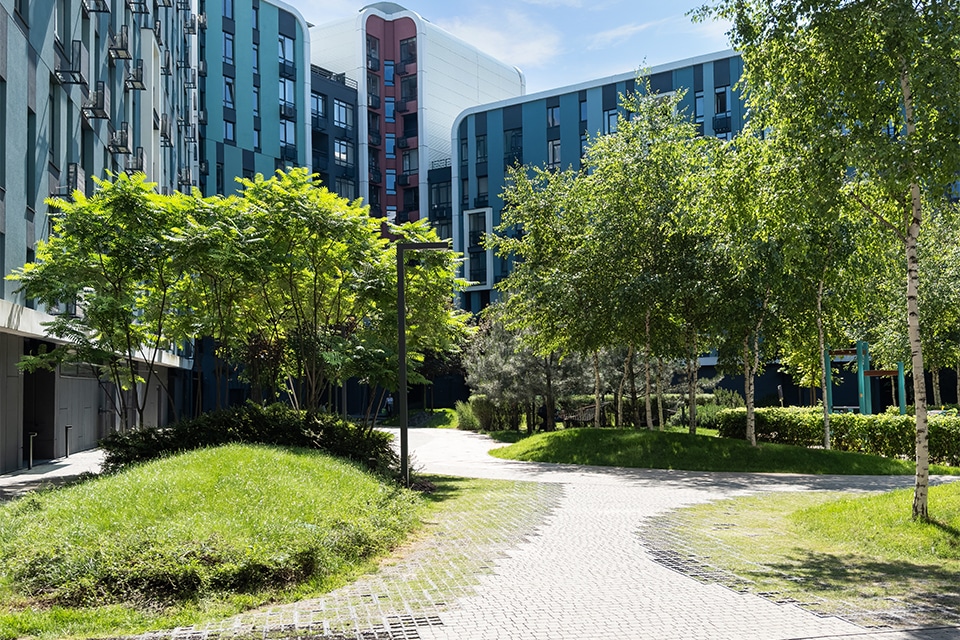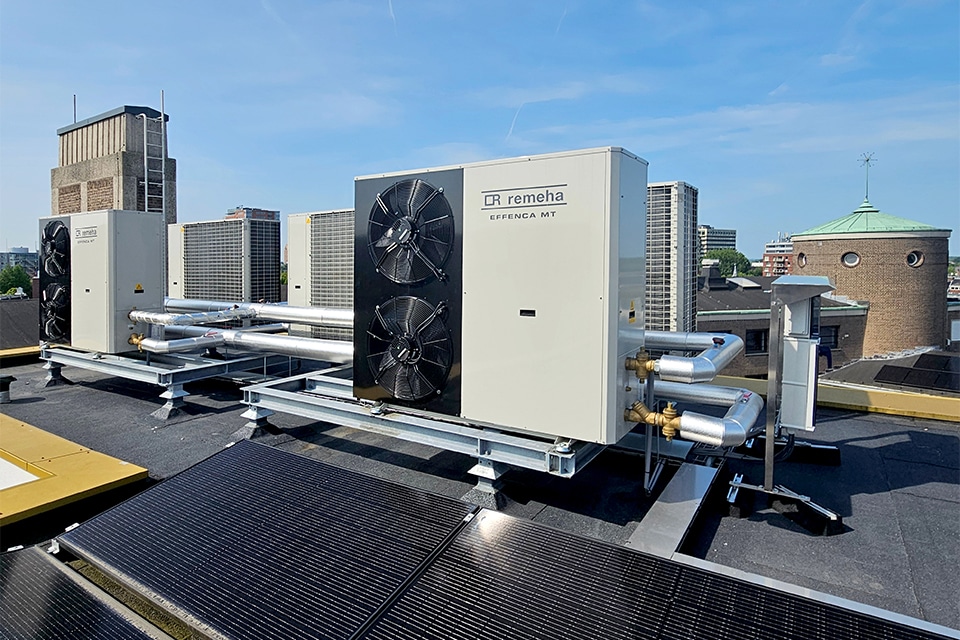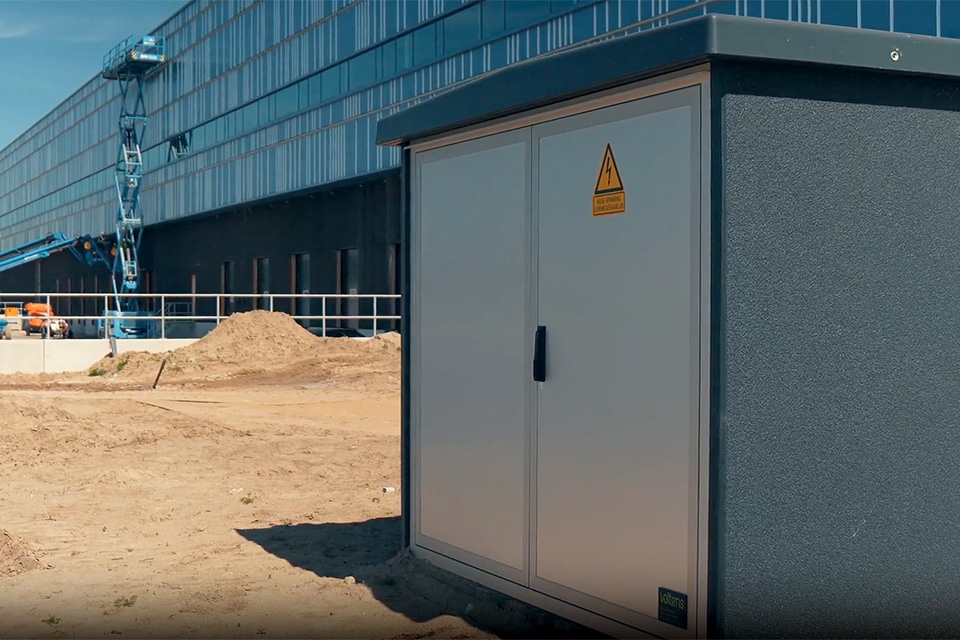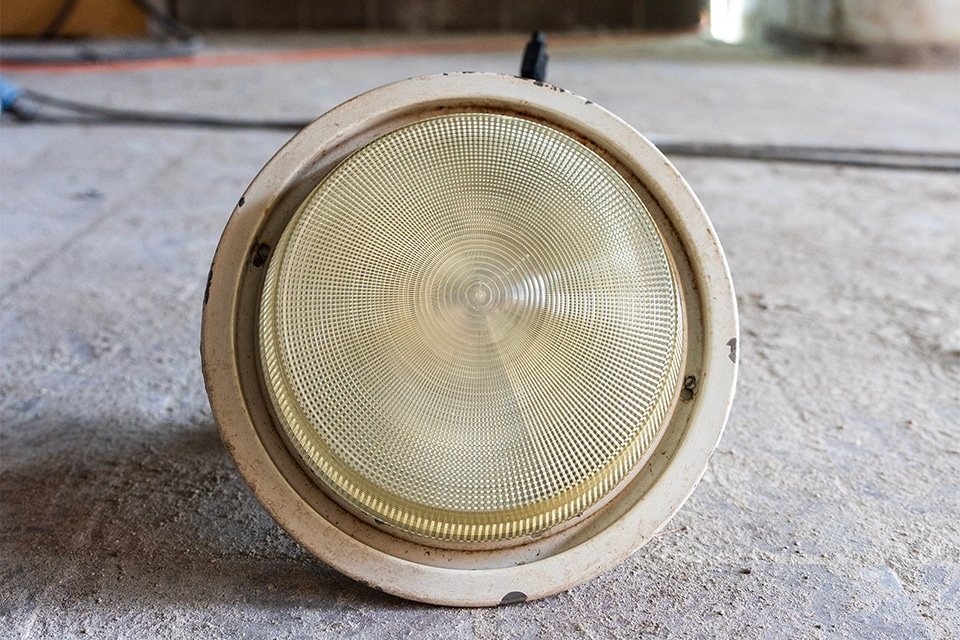
'Air handling unit on its side' leaves building appearance intact
Whether offices, schools, hotels, healthcare or residential buildings: architects pay enormous attention to the form and appearance of their buildings. They design with an eye for detail and with respect for surroundings, people and the environment. "When the aesthetic design is shared with the installation consultant, all too often air handling units and other installations are added that negatively affect the appearance of the building," notes Wouter Wijma, general manager of Ned Air. As an example, he cites a new construction project for an SME along the N50 in Kampen, where a large air handling unit and air ducts distracted all attention from the building below. "With the SkyLine, architects and consultants can anticipate this and the aesthetic design remains intact." The 'air handling unit on its side' was developed in co-creation with client, consultant and installer and is now finding eager acceptance in the market.
The SkyLine was initially developed for a school project in Amsterdam, where Welstand did not want to see the air handling units from street level. "Air handling units are often 1.5 to 2 meters high," Wijma knows. "In large projects, this height can even reach 3.5 meters, while Welstand increasingly prescribes a maximum height of 1 meter. To respond to this, we laid our existing air handling units on their side and inventoried the possibilities. Based on all the findings, we developed a completely new line of heat recovery units, the first of which have now been delivered and installed. Initially started with units of 1,000 and 2,000 m3/h, we can now also supply units of 4,000 and 7,000 m3/h, with the largest variant still only one meter high. Moreover, we can perfectly integrate customer-specific requirements such as steam humidification, adiabatic cooling, sound attenuation, et cetera. If desired, solar panels can be placed on top of the SkyLine, ensuring maximum self-generation of energy on the roof. Currently, we are even looking at a possibility of powering the air handling units directly from the PV panels and with 48 VDC."

Focus on 'mass customization'
The SkyLine, like all of Ned Air's other air handling units, is produced in a modular fashion, explains Wijma. "About three years ago, we started an internal process to standardize our air handling units without sacrificing customer-specific options. This still allows us to provide customization, but based on standard components and modules. Our 'mass customization' allows us to produce installations even faster and minimizes the risk of errors." He compares the approach to Volkswagen and Audi's modular MQB platform, where, for example, the distance from the driver's seat to the steering wheel, the front axle and the suspension of the engine are fixed. "The same applies to the heart of our air handling units, which we scale up completely to customer specifications. From there we expand the cabinet further and further, according to the (power) wishes and specifications of the customer. For example, our EveryLine 1000 and EveryLine 2000 have exactly the same base, but look completely different. This is because the frame, panels, filters and other components are custom-scaled."

Various implementation options
Ned Air's EveryLine heat recovery units make it easy and quick to achieve a healthy and comfortable indoor climate in any room. The units offer many options in terms of design, control technology, accessories and additional components and fully meet the requirements of ErP 2021. "Also of interest are our RotorLine air handling units with energy-saving heat wheels, for air flow rates from 2,400 to 44,000 m3/h," said Wijma. "These units also offer optimal possibilities for customization and can be delivered fully plug-and-play. Both the RotorLine and EveryLine, depending on customer requirements and the air volume to be ventilated, are eligible for the Energy Investment Allowance (EIA)."




